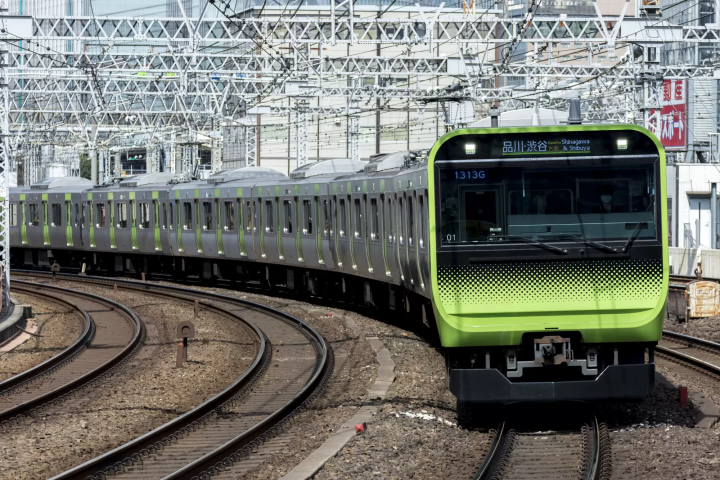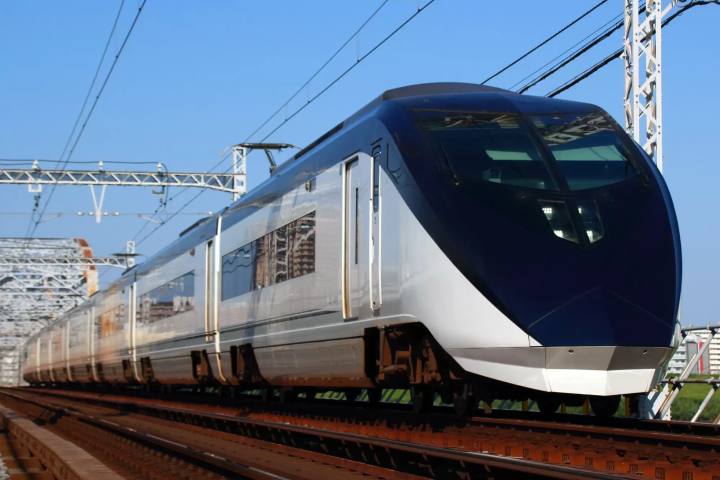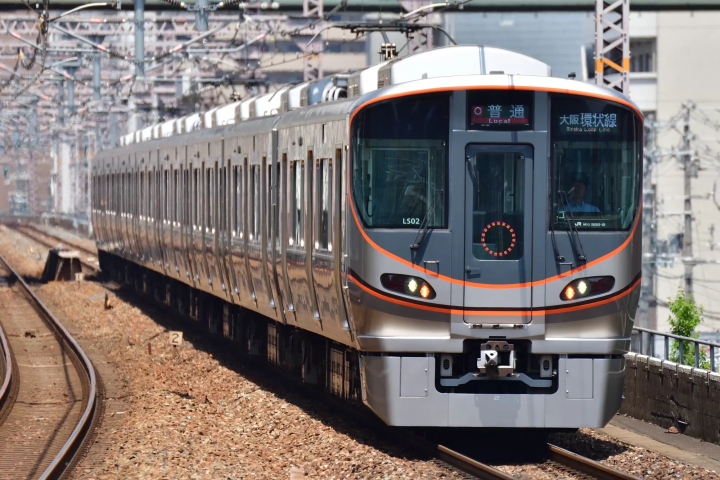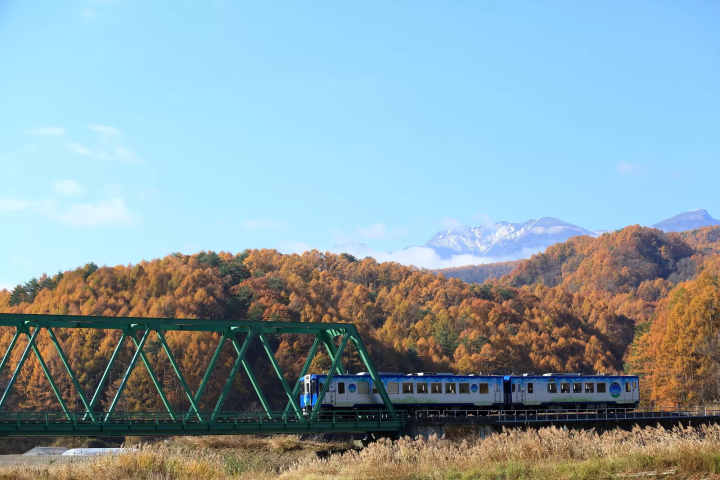Types of Trains in Japan: Using Trains Efficiently While Traveling

The Japanese train system can be difficult to use for a first-timers in Japan. We'll explain the different types of trains, and what to keep in mind when riding them.
Riding Trains in Japan - A Basic Guide
Japan's most convenient method of transportation is taking the train. Often cheaper and easier to access than taking taxis or buses, many people in Japan travel by train every single day.
However, the Japanese train system may seem difficult to navigate for those unfamiliar with riding trains. Sometimes with unusual scheduling, like trains stopping at differing stations depending on whether it's a weekday or the weekend, even Japanese locals can have trouble getting on the right train.
So naturally, it can be easy for people visiting Japan to make mistakes like getting on a rapid train and ending up overshooting their intended stop.
To help you navigate around Japan better, here we'll introduce some useful information pertaining to Japanese trains.
1. Train Types (Japan Railway, JR)

Photo by Pixta
There are several railway companies that operate train lines within Tokyo, all of which have their own routes and symbols.
Of these companies, JR (Japan Railway) has the largest reach. Many travelers take the JR, so knowing the different kinds of JR trains will serve you well during your travels. You can distinguish between the different kinds of trains by looking at the electronic notice boards on the platform.
Regular Trains With No Special Fares
普通 (Local): These trains stop at every station.
快速 (Rapid): These trains stop at fewer stations than local trains.
通勤快速 (Commuter Express): These trains run during peak commute times in the morning and evening, and stop at fewer stations than rapid trains; they are used on routes such as the Chūō Line, Keiyō Line, and Saikyō Line.
特別快速 (Special Rapid): These trains will only stop at major train stations, and are used on routes like the Chūō Line and Sōbu Line. There are varieties such as the commuter special rapid train, the Chūō special rapid train, and the Ōme special rapid train.
Trains Which Require Additional Special Fares
特急 (Limited Express): These trains stops at the fewest stations, and will get you to your destination in a flash. You have to pay an additional fare to ride a limited express train.
2. Train Types (Private Railways)
There are various kinds of train types on private railways as well. Keep in mind the various train types to take the optimal route to your destination.
普通 (Local): These trains stop at every station on their line. Some local trains may be indicated on signboards as 各駅停車 (“this train stops at every station”), as well, so pay close attention.
準急 (Semi-Express, Local Express): These trains stop at fewer stations than local trains, but are more frequent than rapid trains.
快速 (Rapid): These trains stop at fewer stations than semi-express trains, but, with a few exceptions, they are more frequent than express trains. You can ride these trains with just a regular ticket.
急行 (Express): These trains stop at fewer stations than rapid trains, and typically run more frequently than limited express trains. In most cases, you can ride express trains without paying special fares, but there are exceptions.
特急 (Limited Express): As noted above, this train stops at the fewest stations. In most cases, you can ride limited express trains without paying special fares, but there are exceptions.
If you arrange the train types according to how few stops each one makes, it goes like this: limited express > express > rapid > semi-express > local.
There are also types like the commuter rapid train during rush hour, and the holiday rapid train, which runs on weekends and holidays, so look out for these trains too.
Notable City Routes in the Tokyo Area
JR Yamanote Line

The Yamanote Line links the stations of Shinjuku, Shibuya, and Tokyo, so it’s indispensable for sightseeing. The Yamanote Line forms a loop around the city, so you need to be aware of the direction you’re heading, and whether you should take the inner loop or the outer loop.
The inner loop goes from Shinjuku→Shibuya→Shinagawa→Tokyo, while the outer loop goes the opposite way from Tokyo→Shinagawa→Shibuya→Shinjuku.
Be sure to confirm whether you should be riding the inner or outer loop, so that you won’t need to make any unintended detours.
JR Chuo Line
The Chuo Line connects Tokyo, Shinjuku, Nakano, and Kichijoji, among other stations.
Kichijoji, popular as a residential neighborhood and home to Inokashira Park, is accessible via the Chūō Line.
It is a common misconception that all trains on the Chūō Line stop at Kichijoji. However, special rapid trains do not stop at Kichijoji. So when heading to Kichijoji, you'll want to switch to a rapid train.
Japanese railway systems can feel quite complex, but if you learn how they work, you can have travel very efficiently. First, remember the different types of trains, and have a comfortable journey traveling through the city.
Useful Limited Express Trains in Tokyo

Photo by Pixta
While Limited Express trains may require special fees or specific tickets to ride, they are usually specialized trains that will get you to airports or will help you travel quickly between different prefectures. Below are some of the Limited Express trains that travelers can make use of.
Keisei Skyliner
The Keisei Skyliner connects Ueno Station in Tokyo and Narita International Airport. This train is a high performance train that travels at high speeds, providing both an efficient and comfortable ride to Narita Airport.
The seats in the train are spacious and free Wi-Fi service is provided. This train is popular among tourists and people traveling for business.
The price of your ticket for riding the Keisei Skyliner can vary depending on the stations you are riding from, but in general a one-way ticket can cost between 2,500 yen to 3,000 yen.
Tickets can be purchased at a ticket counter or at the automatic ticket machines. Tickets can also be purchased in advance online via their website or mobile app. Those arriving at Narita Airport can purchase tickets from the Keisei ticket counter or vending machines.
Narita Express
The Narita Express is another convenient method of getting between Narita Airport and central Tokyo. This train travels from Narita Airport to Tokyo Station and provides a quick, safe, and comfortable ride.
The seats are spacious and there plenty of luggage space for your bags so you can relax at your seats. The Narita Express places great importance in being on-time, so you can depend on it to make your travel plans stress-free.
Similar to the Keisei Skyliner, your train fee will vary between which stations you start and stop at, and which seat class you choose, but in general a one-way ticket will cost between 2,500 yen to 3,000 yen. If traveling from Narita Airport, we recommend choosing the line that will be better suited for reaching your destination. Tickets for the Narita Express can be purchased at ticket machines in Tokyo Station and Narita Airport. Online purchase options are also available via their website or mobile app.
Azusa (Tokyo to Nagano)
The Azusa Limited Express train runs between Tokyo and Nagano prefectures on the Chuo Main Line. This train offers a comfortable ride with beautiful scenery when traveling between Tokyo and Nagano. Popular destinations in Nagano Prefecture such as Kamikochi and Tateshina Kogen can be access by riding the Azusa.
Ticket prices will vary depending on which station you get on and get off at, but in general a one-way ticket costs around 7,000 yen to 9,000 yen for the longer distance. These tickets can be purchased at ticket machines in Tokyo Station or Nagano Station. Advance reservations are also available online via the JR website or with their mobile app.
Notable City Routes in the Osaka Area

Photo by Pixta
The Osaka Loop line (Osaka Kanjo-sen)
The Osaka Loop Line or Osaka Kanjo-sen is a JR West railway train that runs in a loop through Osaka city, similar to Tokyo's Yamanote Line. This line connects major stations in Osaka city, providing convenient access to Osaka's business districts and tourist destinations like Osaka Castle, Tennoji, and Umeda. The Osaka Loop Line has several hundred trains running everyday, making it a crucial means of transportation for the people of Osaka. The fares are also reasonable, making it a great travel option for tourists and locals alike.
Haruka Express (Osaka to Hiroshima)
The Haruka Express is a high-speed Shinkansen that goes between Osaka and Hiroshima. This bullet train ride offers fast service and comfortable seating, offering smooth and efficient travels between Osaka and Hiroshima. The Haruka Express doesn't stop at many in between stations, reducing the travel time between Osaka and Hiroshima.
Ticket prices for a one-way trip on the Haruka Express are generally around 10,000 yen to 12,000 yen, but will vary with which stops you take and which seat class you choose. Tickets can be purchased at ticket machines in Osaka Station or Hiroshima Station. Advance reservation is available through the JR Website or their mobile app.
Special Sightseeing Trains
Those looking for a sightseeing experience while traveling can consider taking one of the several sightseeing trains that many of the railway companies in Japan have to offer.

Photo by Pixta
High Rail 1375 (Hokkaido)
The High Rail 1375 is a sightseeing train located in Hokkaido, where you can enjoy scenic views of Hokkaido while sitting in luxurious interiors of the tourist train. The train goes through several famous sightseeing areas starting with Asahikawa Station and showing off the beautiful scenery of Furano and Biei. Tickets generally cost around 15,000 yen to 20,000 yenand can be purchased on the JR Hokkaido website or ticket windows, and through travel agencies.
Fujisan View Express (Mt. Fuji Area)
For those looking for a scenic view of Mt. Fuji, the Fujisan View Express is the train to take. Passing through famous spots like Mt. Fuji Station and Kawaguchiko Station, tickets generally cost around 10,000 yen to 15,000 yen and can be purchased on the JR Fujikyuko website or ticket windows, and through travel agencies.
Setsugekka (Kyoto, Osaka)
The Setsugekka is a luxury sightseeing train that's run by JR West. This train lets you enjoy the scenery throughout Japan during each of the four seasons. This train will take you to historic destinations like Kyoto and Osaka, along with other areas with beautiful nature. Tickets generally cost around 30,000 yen to 50,000 yen and can be purchased on the JR West website or ticket windows, and through travel agencies.
Read also
FAQ
How do you differentiate trains in Japan?
Trains in Japan are differentiated by speed, service type, operating companies, and fare structures. The iconic Shinkansen (Bullet Train) is renowned for its high speeds of 240-320 km/h, connecting major cities rapidly. Local trains stop at most stations, while rapid and express trains offer faster travel with fewer stops. Various railway companies operate these services, each with distinct networks. Ticket pricing reflects the service level, with Shinkansen tickets usually costing more than local trains, providing travelers with a range of options for their journeys in Japan.
What type of train is very fast in Japan?
The Shinkansen, often referred to as the "bullet train," is the type of train known for its high speed and efficiency in Japan. The Shinkansen is a network of high-speed railway lines connecting major cities with trains that can travel at speeds of up to 240–320 km/h (150–200 mph). These trains are renowned worldwide for their punctuality, safety, and convenience, making them an iconic symbol of Japan's advanced transportation infrastructure.
What is the difference between JR and Shinkansen trains?
JR (Japan Railways), the largest railway operator in Japan, offers various train services including local and rapid trains and the Shinkansen bullet trains. Although operated by JR, the Shinkansen high-speed trains run on dedicated tracks that are separate from other JR lines, reaching speeds of up to 240–320 km/h. Shinkansen stations may be connected to conventional JR stations but are distinct from them, offering efficient services tailored to high-speed travel. Fares for Shinkansen services are typically higher due to their speed and efficiency, while JR trains serve a broader range of stations with varying speeds and fare options.
What is the difference between express and local Japan?
Express trains in Japan are faster and cover longer distances with fewer stops, prioritizing efficiency for passengers traveling between major cities. Local trains, on the other hand, serve shorter distances, making frequent stops to cater to local commuters and those traveling within specific regions. Express services command higher fares for their speed and limited stops, while local trains offer more economical options for shorter journeys and local travel needs.
How do I know if my train is local or express?
You can distinguish between local and express trains in Japan by noting the number of stops: local trains stop frequently at most stations, while express trains skip many stops to reach major destinations faster. Check timetables, station signage, and ticket prices for indications of the service type. Listen to announcements and look for visual cues like train design to identify local or express services easily while navigating Japan's rail network.
What is the difference between Nozomi and Hikari?
Nozomi trains on the Shinkansen network in Japan are faster than Hikari trains, reaching speeds up to 300 km/h compared to Hikari's 285 km/h. Nozomi makes fewer stops, offering a quicker journey between major cities, while Hikari trains have more frequent services and slightly lower speeds, providing a balance of speed and accessibility for travelers on the same routes.
Can you eat on limited express trains in Japan?
Eating is generally permitted on limited express trains in Japan, but passengers should be considerate of others. Opt for non-smelly, quiet snacks, dispose of trash properly, and maintain cleanliness around your eating area. Avoid noisy or messy foods to ensure a pleasant environment for fellow travelers while enjoying a light snack or non-alcoholic beverages during your journey.
Read also
Main image by Pixta
大学4年生。大学ではよさこいサークルに所属し、北は北海道から南は高知まで全国各地のお祭りに参加。アニメとアイドルとゲームとスタバが好き。多趣味です。














































![[Yamanashi/ Hokuto City] 4 Hot New Spots Opening in 2026](https://resources.matcha-jp.com/resize/720x2000/2025/12/12-252747.webp)

![[Reopening in March 2026] Ikoma Sanjo Amusement Park Park, 45 minutes from Osaka , with free admission](https://resources.matcha-jp.com/resize/720x2000/2024/08/28-194409.webp)
![[Gunma] 5 recommended gourmet foods at Kawaba Denen Plaza Roadside Station!](https://resources.matcha-jp.com/resize/720x2000/2025/02/26-225970.webp)
![[Kanazawa] Enjoy the world of gold leaf to the fullest in the city with the highest production volume in Japan](https://resources.matcha-jp.com/resize/720x2000/2025/11/12-249564.webp)